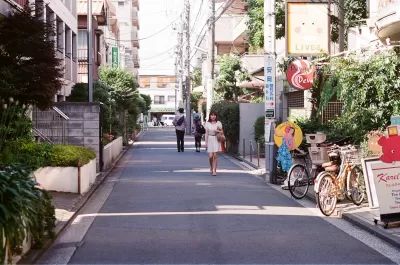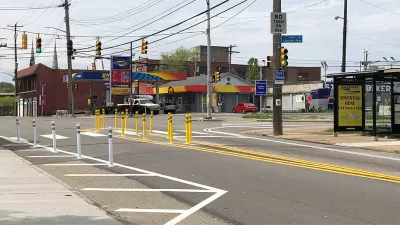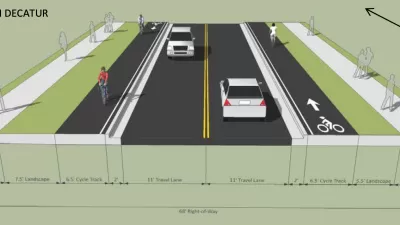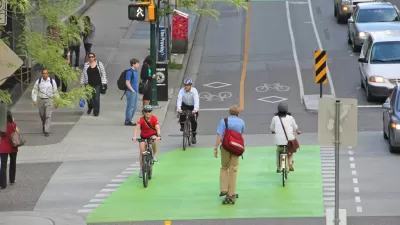Whether driveways are anti-urban or 'anti-pedestrian' depends on how we segregate street uses. As shared spaces where they cross sidewalks, driveways inform the wider question: what makes for a good street?

Are driveways anti-urban? That claim makes sense in North America, where pedestrian and vehicle street spaces are seen as mutually exclusive. The driveway, by definition, breaches a divide by allowing cars to cross the sidewalk. The result is often a series of pedestrian-unfriendly curb cuts, where the sidewalk dips to let cars ascend the curb.
The question then becomes: why have a raised curb at all? Historically, curbs provided a space for walkers away from street filth. But now, "with universal street paving, the replacement of beasts of burden by motor vehicles and rainwater collection systems, the reasons for the curb's existence don't seem all that significant."
The article gives examples of how smaller Japanese streets forgo the curb in favor of shared space for pedestrians, motorists, and cyclists. And on larger streets with high-speed vehicle traffic, physical barriers like trees and poles do a better job keeping cars from sidewalks.
In driveways' defense, the article notes that they can use space more efficiently than roadside parking, clearing the way for features like bike lanes.
FULL STORY: Sidewalks and driveways: is it time to throw the curb to the curb?

Study: Maui’s Plan to Convert Vacation Rentals to Long-Term Housing Could Cause Nearly $1 Billion Economic Loss
The plan would reduce visitor accommodation by 25,% resulting in 1,900 jobs lost.

North Texas Transit Leaders Tout Benefits of TOD for Growing Region
At a summit focused on transit-oriented development, policymakers discussed how North Texas’ expanded light rail system can serve as a tool for economic growth.

Why Should We Subsidize Public Transportation?
Many public transit agencies face financial stress due to rising costs, declining fare revenue, and declining subsidies. Transit advocates must provide a strong business case for increasing public transit funding.

How to Make US Trains Faster
Changes to boarding platforms and a switch to electric trains could improve U.S. passenger rail service without the added cost of high-speed rail.

Columbia’s Revitalized ‘Loop’ Is a Hub for Local Entrepreneurs
A focus on small businesses is helping a commercial corridor in Columbia, Missouri thrive.

Invasive Insect Threatens Minnesota’s Ash Forests
The Emerald Ash Borer is a rapidly spreading invasive pest threatening Minnesota’s ash trees, and homeowners are encouraged to plant diverse replacement species, avoid moving ash firewood, and monitor for signs of infestation.
Urban Design for Planners 1: Software Tools
This six-course series explores essential urban design concepts using open source software and equips planners with the tools they need to participate fully in the urban design process.
Planning for Universal Design
Learn the tools for implementing Universal Design in planning regulations.
Ascent Environmental
Borough of Carlisle
Institute for Housing and Urban Development Studies (IHS)
City of Grandview
Harvard GSD Executive Education
Toledo-Lucas County Plan Commissions
Salt Lake City
NYU Wagner Graduate School of Public Service





























